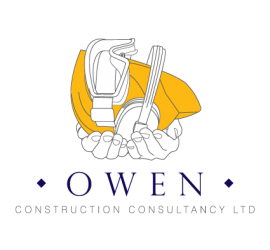Construction sites are bustling hubs of activity, with heavy machinery, workers, and various materials coming together to create impressive structures. Amidst this activity, one paramount concern stands out – the importance of construction safety. The construction industry is thriving in the United Kingdom. Safeguarding the well-being of workers and the public is not just a legal obligation but a moral imperative. Prioritising safety is essential to prevent accidents and maintain the sector’s growth.
This blog will cover some standard health and safety precautions one must take in construction.
The hazards and risks in the construction industry
The construction industry is fraught with hazards, ranging from falls from heights to exposure to hazardous materials. Heavy machinery and equipment pose their own set of risks, and the dynamic nature of construction sites introduces a myriad of potential dangers. Failure to address these hazards can result in severe accidents and even loss of life. Here are some common health and safety hazards and risks found:
Diverse and unprecedented risks
Construction sites are rife with a multitude of health and safety hazards, including working at heights, operating heavy machinery, lifting substantial materials, exposure to dust, and the potential for severe health issues.
Health implications
Construction materials like dust and chemicals can lead to health problems, such as dermatitis, affecting the well-being of workers. Inadequate safety measures can result in injuries, highlighting the significance of proper training.
Life-altering consequences
Ignoring health and safety procedures can have life-altering consequences, with the potential for injuries or, tragically, fatalities. It is imperative for all team members to be well-versed in safety protocols.
Legal and reputational risks
Negligence in health and safety not only jeopardises lives but also exposes construction companies to severe legal claims. Compliance with regulations is not just a moral duty but a safeguard against legal and reputational repercussions.
The significance of safety in construction
Construction safety goes beyond mere compliance with regulations; it’s about creating an environment where every worker can return home safely at the end of the day. Construction safety encompasses a comprehensive set of practices, policies, and regulations designed to protect the lives and well-being of those working on construction sites. It involves identifying and mitigating unsafe conditions and practices that could lead to injuries, incidents, or even fatalities.
Construction health and safety regulations
Understanding construction health and safety regulations is vital for minimising risks and ensuring a secure work environment.
CDM 2015: key regulation
Construction (Design and Management) Regulations 2015 (CDM 2015) outline roles and responsibilities. Designers identify and mitigate risks, while contractors plan and monitor work to eliminate dangers.
General requirements
CDM 2015 sets general health and safety rules, covering site layout, structural stability, demolition, inspections, and emergency procedures.
Other essential regulations
- Control of Asbestos Regulations 2012: Minimise asbestos exposure to prevent health issues.
- Control of Vibration at Work Regulations 2005: Protect workers from machinery-induced back injuries.
- Manual Handling Operations Regulations 1992: Reduce the risk of back injuries when handling heavy materials.
Trained workers should understand and adhere to these regulations to enhance construction safety.
Accidents and incidents: avoiding injuries
No matter how many precautions are taken, accidents and incidents can still occur. However, the importance of safety in construction lies in minimising their frequency and severity. Unsafe practices can lead to devastating accidents, not only endangering the lives of workers but also resulting in significant financial and reputational losses for construction companies.
Regulations act as a safeguard against these unsafe practices. They set clear standards for construction companies and contractors, outlining the measures they must take to maintain a safe work environment.
Health and safety on construction sites
Construction sites are not only places of work but also areas where public safety is at stake. Ensuring building site health and safety is a shared responsibility that extends beyond the workers themselves.
Building site health and safety
Building site health and safety measures are put in place to protect both workers and the public. They include erecting barriers, using warning signs, and implementing traffic management systems to prevent accidents involving pedestrians and nearby residents.
Ensuring a safe working environment
Creating a safe working environment is not just about avoiding fines and penalties; it’s about upholding the well-being of everyone involved in the construction process.
The role of vibration in construction safety
Vibration from heavy machinery can lead to health issues for workers. Proper safety measures, such as vibration-reducing equipment and regular health checks, are essential to combat this hazard.
Understanding fines and penalties
In the UK, non-compliance with safety regulations can result in severe consequences for construction companies and individuals.
Legal consequences for unsafe practices
Fines and penalties are imposed on those who neglect construction safety. However, the financial repercussions are just one aspect; reputational damage and legal action can follow, potentially leading to bankruptcy and loss of livelihood.
The cost of non-compliance with regulations
Non-compliance with safety regulations not only affects individuals and companies but also society as a whole. Accidents and injuries place an additional burden on healthcare systems and can lead to higher insurance costs for the industry.
Prioritising construction health and safety
In conclusion, prioritising construction health and safety is not just a regulatory requirement but a moral and ethical responsibility that benefits everyone involved. It ensures that workers return home safely, protects the public, and safeguards the future of the construction industry. Owen Construction Consultancy understands the importance of construction safety and is dedicated to upholding the highest standards of safety in construction.
As the UK construction industry continues to evolve, it is imperative that safety remains at the forefront of every project. By adhering to safety measures, addressing hazards, and proactively mitigating risks, we can create a construction environment that is not only efficient and productive but also safe for everyone.
September 29, 2023
